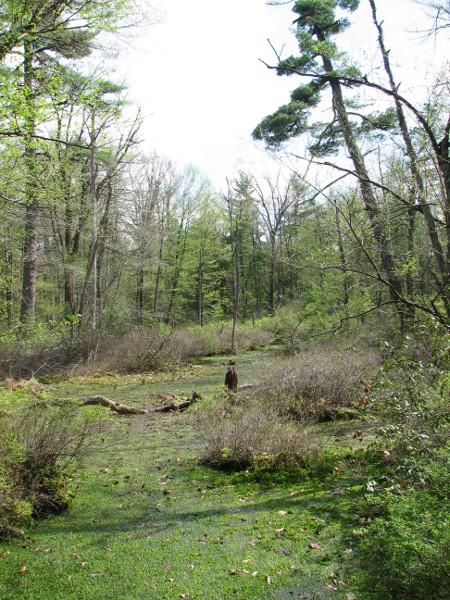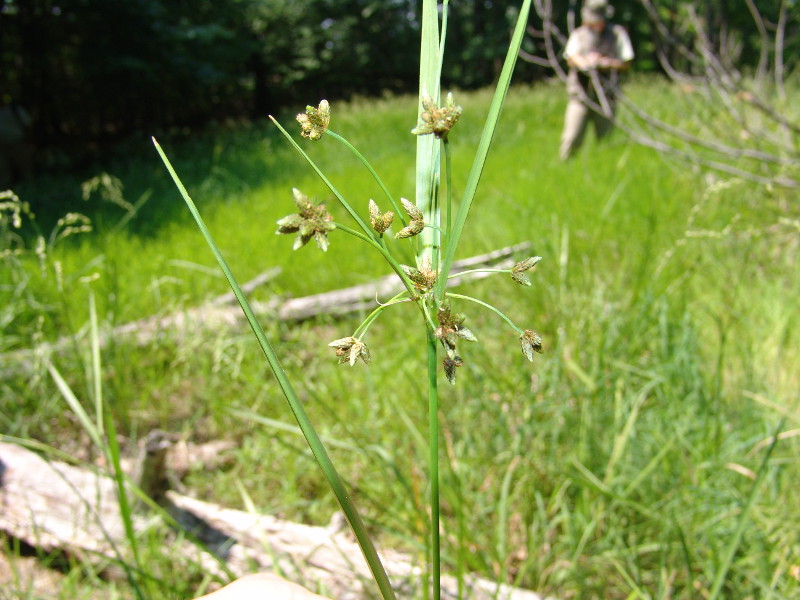
Vernal Pool Vegetation
Vernal pools can host a wide variety of plants and predictable groupings of plants called communities. Many vernal pools have trees and shade tolerant shrubs like high bush blueberry surrounding them, but the vegetation within the basin varies greatly. Some pools have no vegetation in the basin. These are typically smaller pools that are completely surrounded by trees. If the tree branches overhead completely overshadow the pool it is hard for herbaceous plants to become established in the basin. These pools are sometimes referred to as black leaf pools because the pool basin is full of leaves that fell in from surrounding trees. Vernal pools that have a partial to complete gap in the tree canopy over the basin can support a variety of shrubs and plants.
Plants are an important component of the vernal pool habitat. Vegetation influences water levels through transpiration and by creating shade which slows evaporation and moderates pool temperatures. Plant growth and decay build up the organic layer in the pool basin which helps the pool retain water longer. Trees and other plants contribute large quantities of dead leaves and wood which supports the whole food web. Plants provide habitat from shelter and egg laying sites for seasonal pool animals. They also provide protective cover where prey can hide from predators. In all these ways, vegetation helps shape the seasonal pool community.
The Terrestrial and Palustrine Plant Communities of Pennsylvania 2nd Edition provides descriptions of the upland and wetland plant community types in Pennsylvania and can be used to categorize plant assemblages found across the landscape. This information is available online at https://www.naturalheritage.state.pa.us/Communities.aspx.
A variety of shrub and herbaceous plant communities may be found in vernal pools. Several typical assemblages include Rice Cutgrass - Bulrush Vernal Pool, Wool-grass - Mannagrass Mixed Shrub Marsh, Buttonbush Wetland, and Sparsely Vegetated Vernal Pool Community. Seasonal pools often have a component of swamp forest at the pool and upland interface. This vegetation often closely fits the Red Maple-Black Gum Palustrine Forest type.
Like animals found in seasonal pools, there are some native plant species well adapted to life in temporarily inundated habitats. In Pennsylvania, there are five species of special concern that are known to utilize seasonal pool habitats. They are small beggar-ticks (Bidens discoidea), lance-leaved loosestrife (Lysimachia hybrida), Oakes' pondweed (Potamogeton oakesianus), spotted pondweed (Potamogeton pulcher), and northeastern bulrush. The northeastern bulrush (Scirpus ancistrochaetus) is a federally endangered plant species found almost exclusively in seasonal pools in Pennsylvania.

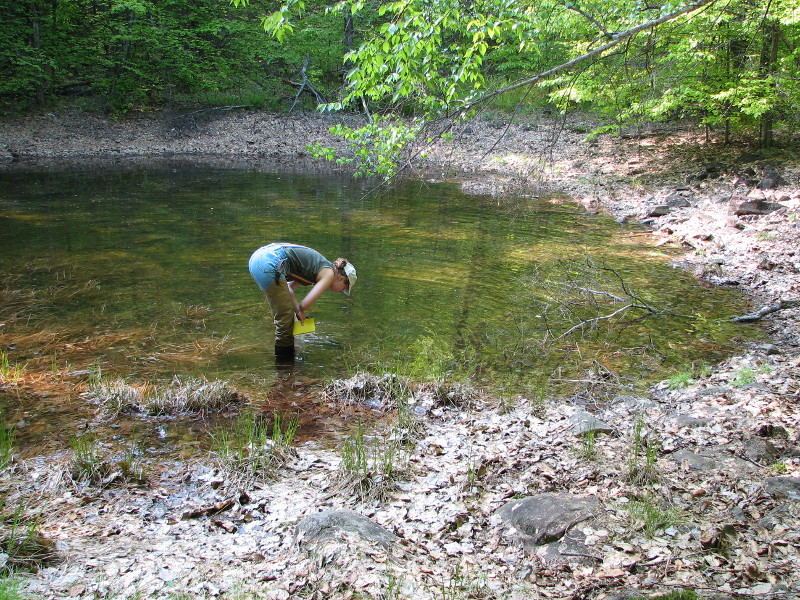
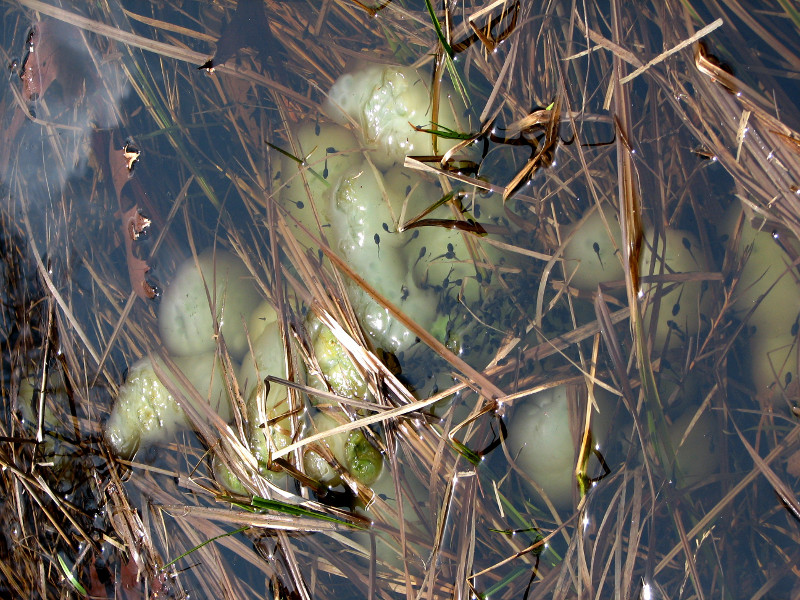
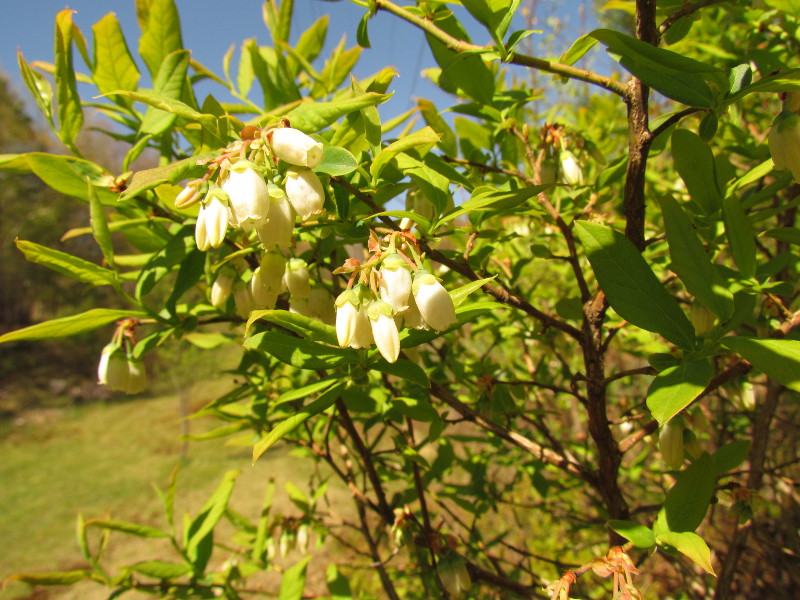
.jpg)
